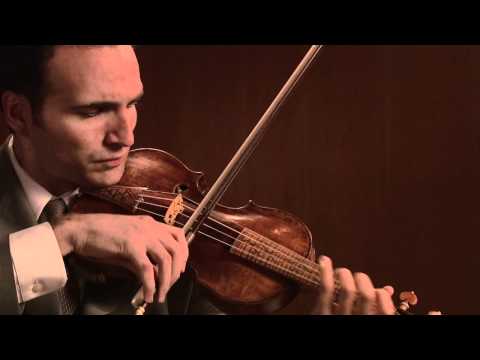10.5: The Doctrine of Affections
- Page ID
- 72417
Introduction

The doctrine of the affections—also known as the doctrine of affects, doctrine of the passions, theory of the affects, or by the German term Affektenlehre—was a theory in the aesthetics of painting, music, and theater, widely used in the baroque era (1600–1750). Literary theorists of that age, by contrast, rarely discussed the details of what was called “pathetic composition,” taking it for granted that a poet should be required to “wake the soul by tender strokes of art.” The doctrine was derived from ancient theories of rhetoric and oratory. Some pieces or movements of music express one Affekt throughout; however, a skillful composer like Johann Sebastian Bach could express different affects within a movement.
History and Definition
The doctrine of the affections was an elaborate theory based on the idea that the passions could be represented by their outward visible or audible signs. It drew largely on elements with a long previous history, but first came to general prominence in the mid-seventeenth century amongst the French scholar-critics associated with the Court of Versailles, helping to place it at the center of artistic activity for all of Europe. The term itself, however, was only first devised in the twentieth century by German musicologists Hermann Kretzschmar, Harry Goldschmidt, and Arnold Schering, to describe this aesthetic theory.
René Descartes held that there were six basic affects, which can be combined together into numerous intermediate forms:
- Admiration (admiration)
- Amour (love)
- Haine (hatred)
- Désir (desire)
- Joie (joy)
- Tristesse (sorrow)
Another authority also mentions sadness, anger, and jealousy.
Lorenzo Giacomini (1552–1598) in his Orationi e discorsi defined an affection as “a spiritual movement or operation of the mind in which it is attracted or repelled by an object it has come to know as a result of an imbalance in the animal spirits and vapours that flow continually throughout the body.”
Affections are not the same as emotions; however, they are a spiritual movement of the mind.
A prominent baroque proponent of the doctrine of the affections was Johann Mattheson.
Key Signature
Key signature was used to convey the different affections.
C Major: rejoicing, impudent
C Minor: sweet, but sad
D Major: stubborn, noisy, warlike and rousing
D Minor: devout, serious, grand, calming
E Flat Major: pathetic, plaintive
E Major: the fatal separation of body and soul
E Minor: pensive and grieving, but not without hope
G Flat Minor: distress, abandonment
G Major: persuasive and brilliant
G Minor: grace, kindness, loveliness
A Major: gripping and clear
A Minor: honorable and calm
B Flat Major: magnificent, yet modest
B Minor: hard, unpleasant and desperate
Listen: Bach and Affect
In the following video, Sean Avram Carpenter performs the Adagio from Sonata No. 1 in G Minor by J. S. Bach. What affect (or “affection”) do you think Bach was trying to convey with this piece?
Contributors and Attributions
- Doctrine of the Affections. Located at: https://en.Wikipedia.org/wiki/Doctrine_of_the_affections. License: CC BY-SA: Attribution-ShareAlike
- Johann Mattheson. Provided by: Wikimedia. Located at: https://commons.wikimedia.org/wiki/File:Johann_Mattheson.jpg. License: CC BY-SA: Attribution-ShareAlike
- Adagio from Sonata No. 1 in G minor by J. S. Bach. Located at: https://www.youtube.com/watch?v=_pnhewS40ns. License: All Rights Reserved. License Terms: Standard YouTube License


